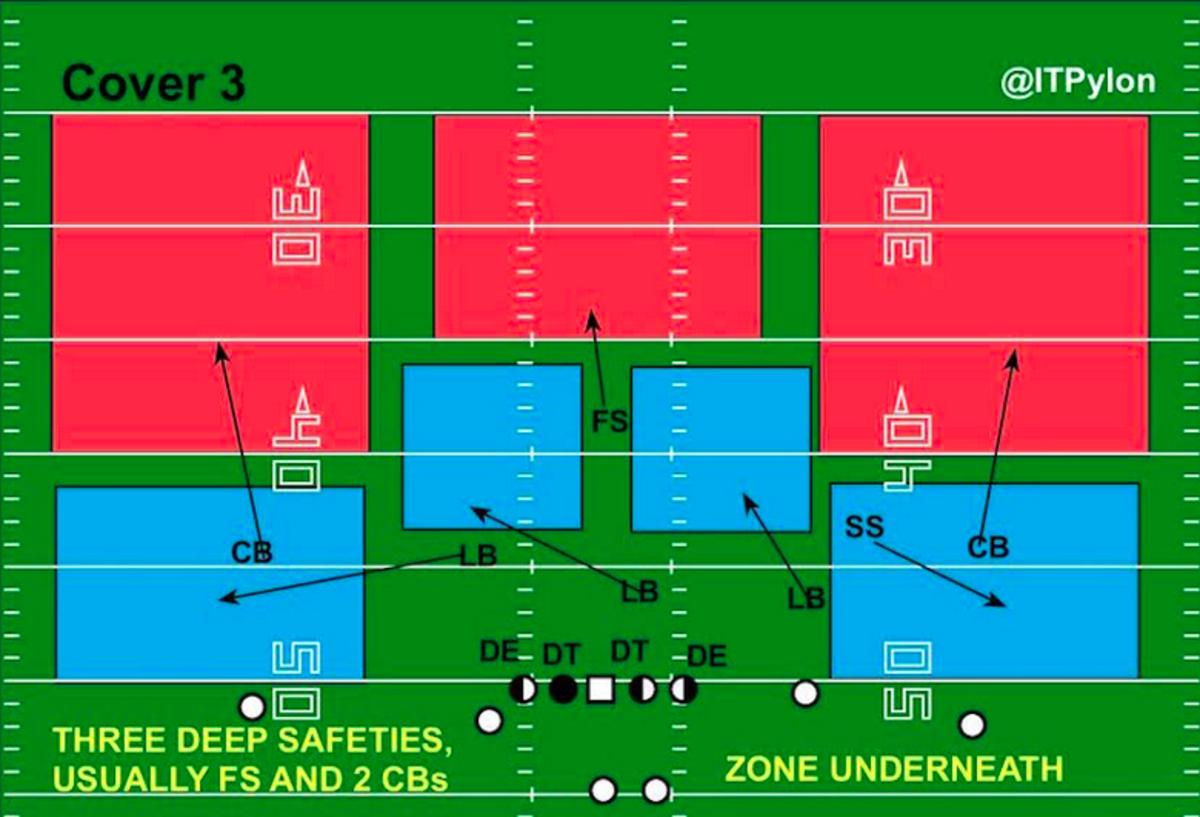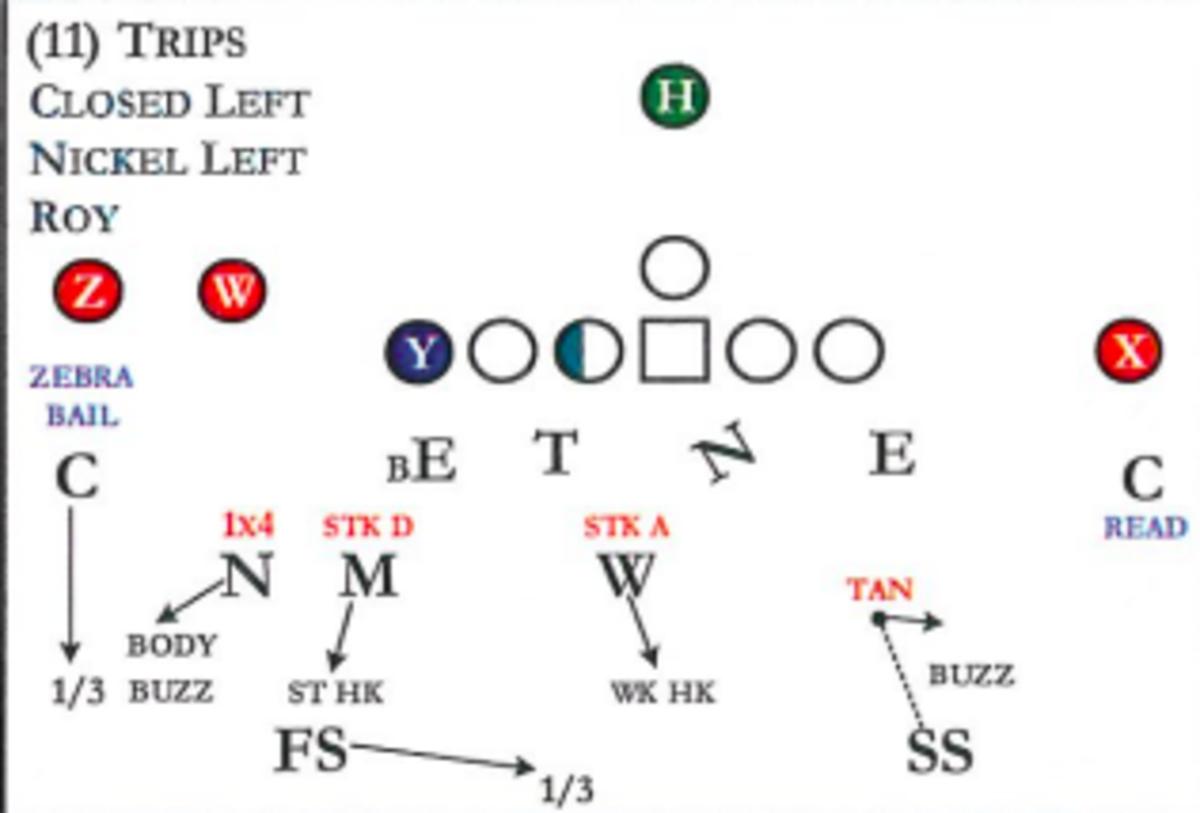Film Room: Stephon Gilmore is Vital to Gus Bradley's Single-High Scheme
The Indianapolis Colts' are undergoing a major change on the defensive side of the ball in 2022, as long-time coach Gus Bradley takes over the Defensive Coordinator role from Matt Eberflus. With Bradley coming to town, there will be a bit of an adjustment period for this defense.
Luckily, the Colts are loaded on the defensive side of the ball, boasting five players that have been named to the Pro Bowl in recent seasons (three of which being named to the All-Pro team). One of the more highly-touted players on this defense is former Defensive Player of the Year Stephon Gilmore.
Gilmore was signed by the Colts this offseason after a fairly productive year with the Carolina Panthers. He may not be the All-Pro cornerback that he once was, but he will prove to be one of the more important players for this defense once the season starts up.
Today, I will be diving into why Gus Bradley has evolved to more match coverage on defense and why this makes a player like Gilmore essential to the unit's success this upcoming season.
Why Match?
Let's start with the basics here. A cover three defense is a fairly simple four underneath, three deep coverage call. The outside corners, typically, would each take a deep third and the free safety would man the middle of the field in the deep zone.
In a traditional spot-drop cover three defense, the strong safety, nickel corner/SAM linebacker, and two inside linebackers would take underneath zones.
Here is a diagram that shows how the coverage typically would look (courtesy of Inside The Pylon):

The main conflict with this defense in the modern NFL is how susceptible it is to vertical seam routes. If an offense were to run four vertical routes (two on the outside and two up the seams), the free safety would be left to cover two different routes on different hashes. That is far too much stress to put on a deep coverage player.
As a result, defenses at all levels of football developed what is called pattern matching. Pattern matching is a set of rules for a zone defense to follow when these vertical routes are called. This principle was born back in the 1990s with Nick Saban and Bill Belichick. According to Pats Pulpit, this is the base set of rules they established to follow:
- The Flat defender has the #2 receiver (Slot or Tight end) man to man IF he goes vertical
- The Cornerback has the #1 (Outside receiver) receiver man to man IF he goes vertical
- If both #1 and #2 go vertical, the hook defender will cover #3 (the remaining receiver to that side)
So, let's look at an example of how Gus Bradley mixed in pattern matching this past season with the Las Vegas Raiders. The Raiders are dropping into a basic cover three look with the outside corners and the deep safety taking the deep thirds of the field. The Baltimore Ravens expect this, and dial up a play design to attack the vertical seams.
With Gus Bradley calling this seam-alert cover three (or soft sky in some playbooks), the Raiders are able to cover up this would-be touchdown. The strong safety at the top of the screen would typically be the buzz defender and be responsible for a hook/flat zone. In this play-call, his responsibility changes if the tight end to his side breaks vertical.
Strong safety Johnathan Abram reads the vertical route by the tight end and carries that route to the endzone. His coverage on the play leads to the incomplete pass.
Really good example of why match coverages are important. Ravens are attacking seams here, which puts deep safety in a bind in spot-drop cover three
— Zach Hicks (@ZachHicks2) August 11, 2022
Lamar Jackson thinks he'll have a window to his right, but Johnathan Abram carries the tight end seam vertically to interrupt pass pic.twitter.com/4tl5LRQVTQ
The NFL is a 3X1 League
So now that we know why pattern matching is important in the NFL, we must now look at how a coach like Gus Bradley deploys it. Passing games in the NFL are increasingly starting to rely on 3X1 sets, which means that there are three pass catchers on one side of the field and one pass catcher on the other side.
When a defense sees this, they will typically shift their formation over to the strong side of the field. When this happens, the side with more defenders is often referred to as the "closed" side. What I am going to be doing today, and how I am going to bring this conversation back around to Stephon Gilmore, is talk about the "open" side of the field.
Here is a little diagram from a playbook that I have. The closed side of the field features the nickel cornerback along with the two linebackers shifting to match the offenses' strength. The deep free safety is also shading that side of the field to provide help over the top. That leaves just the strong safety and the opposite boundary cornerback alone on the backside.

So, how does this play look in real time? Let's look at an example from the Raiders this past season. This is a typical cover three look as the offense comes out in a 3X1 set. To the closed side of the field, each player performs what is typical in a cover three.
The nickel corner is in a hook/flat zone, the MIKE linebacker is the hook zone, and the outside corner is taking a deep third. The middle of the field safety is also shading that side of the field to provide help over the top. This essentially leaves the open side corner on an island by himself.
If you refer back to that picture I posted above, the open side corner is in what is called a read assignment. That means that this corner is up in press coverage and basically playing man on any route that doesn't break inside. The corner on this play is Brandon Facyson and he is able to force an incomplete pass on the backside.
— Not Zach’s Burner (@NotZachsBurner1) August 11, 2022
Where Stephon Gilmore Comes Into Play
So, how does this impact Stephon Gilmore? With Gilmore pedigree of elite-level play in the NFL, he will likely be tasked with being the open side cornerback in a lot of these looks. That backside corner is left alone on an island, so it is key to have a player that the Defensive Coordinator trusts in that spot.
Here is another example of this open side corner being left on that island. The corner on this play is Trayvon Mullen and the entire defense is shading the closed side of the field. Even with this pass being thrown so far down the field, the deep safety has no chance to help him due to the shade up top.
Mullen is able to make an excellent play on the ball to get the incompletion on this rep.
— Not Zach’s Burner (@NotZachsBurner1) August 11, 2022
This last clip, however, shows why you need a high level player that you can trust in this role. Offenses like to isolate their top target on the backside to get that one on one match-up down the field. If that match-up is one that favors the offense, it could lead to a big play vertically.
Trayvon Mullen is, again, the corner on this play, but this time he is up against Tyreek Hill. Hill is obviously a match-up nightmare for any corner in coverage and Mullen certainly had his hands full. Hill is able to get a step on Mullen, which leads to the pass interference deep in the Raiders' own territory.
Mullen was not terrible by any means on this play, but it shows the importance of having a top corner on the backside. One small mistake could lead to a huge gain for the offense.
— Not Zach’s Burner (@NotZachsBurner1) August 11, 2022
Final Thoughts
The Indianapolis Colts are changing their defensive scheme to incorporate a lot more single-high looks in 2022. With that, some players are going to be relied on more than others in this revamped defense. Former Defensive Player of the Year Stephon Gilmore will be pivotal to this scheme change.
With how Gus Bradley likes to pattern match down the field, and with the NFL's tendency to run 3X1 formations, Gilmore will oftentimes be the backside corner on an island in cover three. With his pedigree and expertise, Gilmore should thrive in this role for the Colts.
I don't know what kind of year Gilmore will have in 2022, but I do know that he will be one of the most important players on the team this upcoming season. If he performs anything like he has in the past, the Colts are in good hands.
Need your fill on daily Colts' content? Head over to the Locked On Colts' YouTube channel where Jake Arthur and myself hit on all the major topics surrounding this team. Hit that subscribe button while you are there!
Follow Zach on Twitter @ZachHicks2.
